Invisalign – Chaska, MN
The Seamless Way to Straighten Your Smile
There is just something so appealing about a smile with perfectly straight teeth. However, the thought of going through the orthodontic treatment necessary to achieve such a smile may not be as appealing. Well, here’s another thought—you don’t have to wear a mouthful of metal braces to have straight teeth. With Invisalign in Chaska, MN, hardly anyone will know that you’re wearing braces until you’ve completed treatment and your smile says it all!
At Chaska Dental Center, Dr. Swingdorf is an Invisalign Preferred Provider, so you can be certain that the outcome of your orthodontic treatment will be a beautiful, straight smile. Dr. Swingdorf works closely with the Invisalign lab to develop a treatment plan that will gradually but effectively, move your teeth into proper alignment.
Why Choose Chaska Dental Center for Invisalign?
- Customized Treatments from an Invisalign Preferred Provider
- Dental Team That Treats All Patients Like Family
- Dental Insurance Welcome & Financing Offered
How Does Invisalign Work?
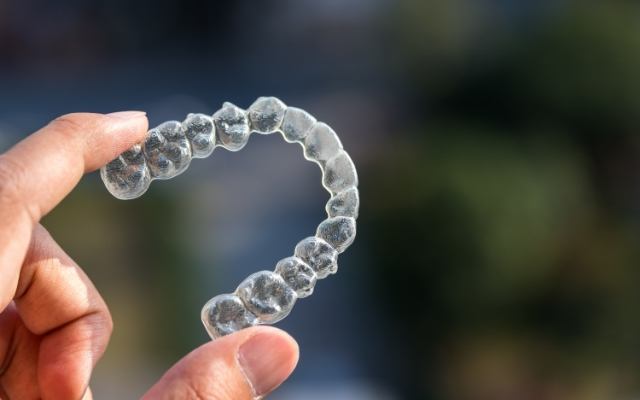
As the name suggests, Invisalign is practically invisible. The system uses a sequential series of clear plastic aligners to move your teeth. Your path to a straight smile begins with a thorough assessment of your oral health. Any extenuating problems—cavities or gum disease, for example—will need to be taken care of before orthodontic treatment begins. Then, we’ll assemble a comprehensive collection of X-rays, photographs, and impressions of your teeth. Your dentist in Chaska, Dr. Swingdorf, will use these to develop a treatment plan that will be the blueprint Invisalign needs to fabricate your customized aligners.
The aligners arrive at our dental office in sets—one for the teeth along your upper arch and one for the teeth along your lower arch. To complete your orthodontic treatment in a timely manner, the aligners will need to be worn every day for about 21 hours. Each set will be worn for a few short weeks, and then you’ll advance to the next set in the series. Of course, Dr. Swingdorf will want to see you periodically to check your progress, but otherwise, that’s all there is to wearing Invisalign. Stay on schedule and a beautifully straight smile will be yours in a year or two!
Who Can Invisalign Help?

Does Invisalign fix an overbite? Can these aligners close the wide gaps between your teeth? Invisalign is known for its versatility, which means it is capable of treating various types of dental problems, including overcrowding, gaps, overbites, underbites, crossbites, and open bites. The only way to know for sure if you are a candidate for this type of clear aligner treatment is to meet with Dr. Swingdorf. As an Invisalign Preferred Provider, he can determine if customized trays will move your teeth in the right direction.
Crowded Teeth
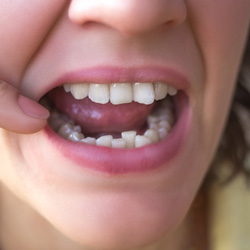
When crowded teeth make it impossible to adequately brush and floss, you can easily develop tooth decay, cavities, and gum disease. Fortunately, Invisalign clear aligners can create the necessary space, allowing for a healthier, more aesthetically pleasing smile.
Gaps Between Teeth
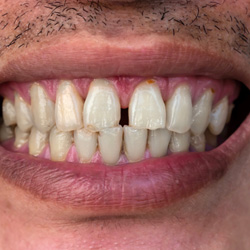
Gapped teeth pose a similar problem because of the ease with which bacteria and food particles become trapped in these large, unnecessary spaces. Not only can they pose a significant risk to your oral health, but they also cause low self-esteem for many individuals. With Invisalign, however, we can close the gap and allow for healthier teeth and gums that remain free of decay and disease.
Overbite
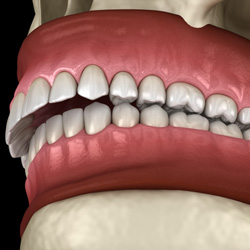
An overbite can often lead to jaw pain, enamel erosion, and speech issues because of the overjet of the upper teeth. This misalignment negatively affects the bottom arch, but clear aligners can successfully fix it. By wearing Invisalign aligners, you can watch as your jaws begin to move, creating an appropriate and healthier gap between your upper and lower rows of teeth.
Underbite
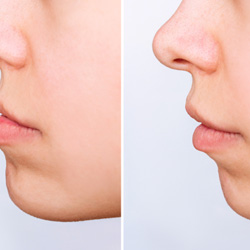
When an underbite is the problem, it can usually be tied to habitual thumb-sucking as a child, genetics, or dental trauma. The teeth protrude out over the top row of teeth, making it difficult to sleep without interruption. Other potential issues can include bad breath and difficulty chewing. The good news is that Invisalign aligners can be customized to generate better alignment by slowly moving your jaw back so that the top and bottom rows of teeth come together correctly.
Crossbite
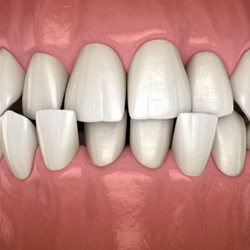
If Dr. Swingdorf sees that you have a crossbite, do not assume that discreet orthodontic treatment is out of the question. Although the overlapping of upper and lower teeth is likely to be caused by genetics, poor oral hygiene, or losing your baby teeth too early, clear aligners can bring your bite back into alignment by targeting teeth that stick out too far. If unhealthy jaw development is the cause of your crossbite, though, he can suggest Invisalign in addition to another form of complementary treatment.
Open Bite
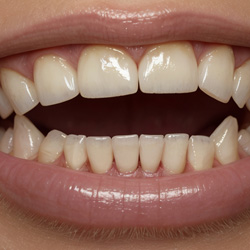
Invisalign aligners can be used to address an open bite as well – a dental issue that is the result of our back teeth touching, but not your front teeth. This creates a large gap between the two arches, which can cause speech problems and an increased risk of dental damage. By carefully preparing a treatment plan to address this bite misalignment, Dr. Swingdorf can use Invisalign to shift certain teeth at different times. This will eventually bring the two rows closer together, creating a more cohesive and visually pleasing smile.
The Benefits of Invisalign
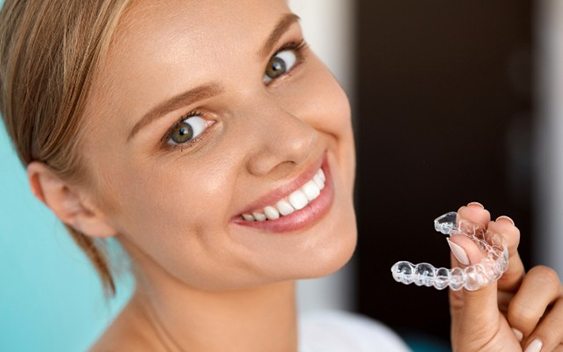
Teenagers and adults can experience the many unique benefits of Invisalign when choosing to move forward with treatment at Chaska Dental Center. While traditional braces are effective and beneficial for all types of smiles, only Invisalign can provide the subtlety and flexibility most patients prefer (and appreciate). If you are considering this clear aligner system to straighten your teeth, discover what kind of benefits you can expect along the way.
Gentle Orthodontic Treatment
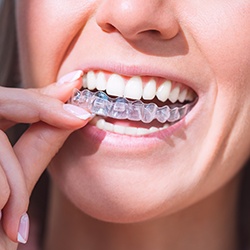
As a non-invasive form of orthodontic treatment, Invisalign aligners are unlikely to cause a problem in your daily life. Not only are they removable, so you can eat all your favorite foods, but they also allow for more effective oral health and hygiene. You’ll find that by wearing your trays 20-22 hours a day, you will become accustomed to how they feel, making it easier to go about your day without experiencing complications or delays.
Translucent Aligners

One of the most common reasons patients choose Invisalign is because of its discreet appearance. This is the primary difference between Invisalign and metal braces – their look. With virtually translucent trays, no one ever has to know you are being treated with clear aligners. Instead, you can resume straightening your smile without shiny, bulky metal peering out each time you open your mouth.
Sleeker Trays Designed for Comfort
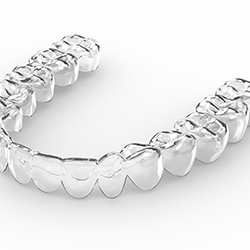
Metal brackets and wires are known to cause discomfort because of how they rub against and irritate the soft oral tissues inside the mouth. Whether it’s your lips, cheeks, tongue, or gums, oral sores can form, which can be bothersome over time. However, Invisalign aligners are crafted using sleek materials that fit snug against your teeth to ensure more comfortable wear time. Instead of experiencing soreness each day, you will appreciate the smooth feel of your aligners against your soft oral tissues.
Greater Self-Esteem

Although achieving a straighter set of teeth at the end of treatment will no doubt give you greater confidence, making sure you feel just as self-assured during the process is important as well. Traditional braces can make this difficult, but Invisalign is designed to keep you from having to compromise your appearance each day. Not only will you walk into a room pleased with the look of your changing smile, but you’ll become increasingly more confident as you watch your progress along the way.
Fewer & Faster Check-Ins
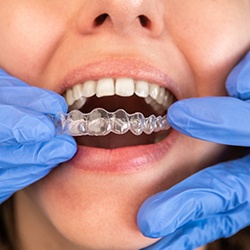
Wire tightening and replacement can take hours to complete when wearing traditional braces; however, with Invisalign, you don’t have to worry about spending that kind of time in the treatment chair. Instead, your dentist will only require periodic check-ins that involve checking your progress to determine if your teeth are moving at the correct speed and in the right direction.
Easy Maintenance
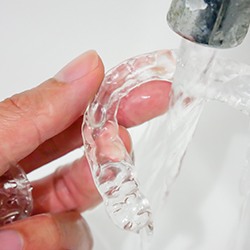
Keeping your aligners clean won’t be a problem since you are supposed to take them out before starting your oral hygiene regimen. Not only will you be able to adequately clean your teeth and gums without having to navigate your braces, but you’ll also find it easier to maintain the cleanliness of your aligners, using only lukewarm water, clear soap, and a soft-bristled toothbrush.
By taking the time to give your smile the attention it deserves, you will enjoy better oral health and hygiene throughout treatment.
Living with Invisalign Aligners

Are you still thinking about investing in Invisalign aligners, or are you set on using these clear trays to straighten your teeth? No matter what you decide, it can be helpful to understand what living with Invisalign is like, as this might sway you to move forward with treatment. Knowing what to expect can help you better prepare for what lies ahead as you work toward a healthier set of pearly whites, so read on to discover what tips are necessary if you want to keep your treatment on track.
Wearing Your Trays 20-22 Hours a Day
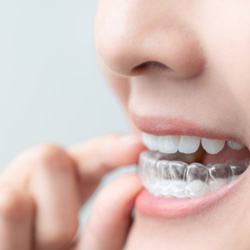
For teeth to move, they need consistent pressure. One way to ensure they get the push they need to start shifting is with Invisalign. However, just wearing these trays off and on will not lead to a healthier, straighter smile. Instead, clear aligners can be used to apply the necessary gentle pressure. Of course, you must wear your trays 20-22 hours each day if you prefer to avoid a delay in your treatment. Failing to wear these aligners will keep your teeth seated in the same position, not moving.
If you are considering Invisalign, you’ll need to commit to the 20-22 hours and only take them out if you are planning to eat a meal, enjoy a beverage, or clean them.
Cleaning Your Aligners
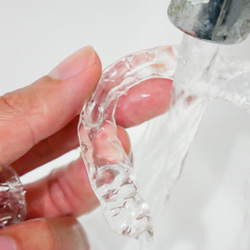
Bacteria and other harmful particles can accumulate on your trays throughout the day. To prevent these from transferring to your teeth and continuing to put your pearly whites in harm’s way, you’ll need to make sure you’re cleaning your aligners regularly. This means every morning and night, and rinsing them off each time you take them out and prepare to reinsert them.
You can use a soft-bristled toothbrush, lukewarm water, and clear soap. You may also use Invisalign Cleaning Crystals to give your trays a thorough clean.
Eating & Drinking

With Invisalign, you can eat all the foods you love, but you must remember to remove your trays before taking a bite. Although the aligners are durable and strong, they cannot sustain daily wear and tear – the kind that’s required to bite through hard and crunchy foods. Instead, you’ll need to remove your trays before you begin eating any kind of food. The only beverage you can continue to consume with your aligners in is water, as this will not harm your Invisalign or teeth in any way.
Losing or Damaging a Tray
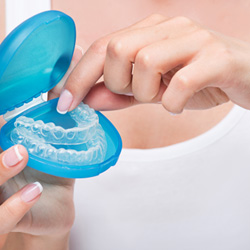
Losing or damaging an Invisalign tray doesn’t need to cause panic, but you shouldn’t wait a long time to seek help. Our team will recommend that you purchase a protective case (or two) to keep your trays in anytime they are not inside your mouth. This will keep them from accidentally being thrown away or damaged. Also, by keeping your trays put up when you’re not wearing them, little hands (children) or pets are less likely to take off with your trays.
Routine Check-Ins
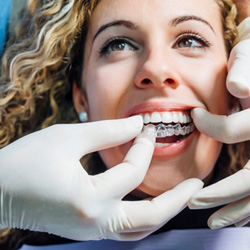
Throughout Invisalign treatment, you will be required to meet with your Chaska Dental Center team for follow-up appointments. These regular check-ins will be necessary to allow us to review your progress and make sure no adjustments are required. If they are, we will work quickly to keep your smile on track. However, these appointments should not take longer than 30 minutes and should only be every 4-6 weeks.
Understanding the Cost of Invisalign®

The cost of Invisalign in Chaska is different for each patient. Why? Because no two cases are alike. While you may only need aligners for your upper row of teeth, another individual may require them for both arches. We will personalize your treatment plan based on the severity of your dental problem, the number of aligners you will need, and the timeline required for successful treatment. Our team will work with you to identify whether you are covered by your dental insurance carrier for orthodontic treatment as well as help maximize any of your available benefits.
Factors that Affect the Cost of Invisalign
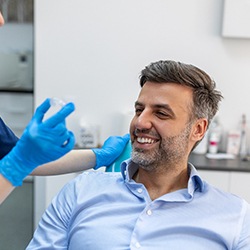
You will discover that the cost of your Invisalign treatment will likely be very different than someone else’s personalized plan. This is why there cannot be a set price for this type of orthodontic care. Instead, when meeting with your Invisalign dentist, they will complete a thorough examination of your oral anatomy while determining the following factors as part of your overall cost estimate:
- Do you need Invisalign aligners for both your upper and lower arches or just one?
- Can Invisalign be a reliable form of treatment to fix the type of dental problem you’re experiencing (i.e., overcrowding, gaps, bite misalignment)?
- How severe is your dental issue? How many sets will you need?
- Which type of retainer will you need once you are finished with Invisalign?
Invisalign vs. Smile Direct Club™: Which Costs More?

When turning on the TV, you’re likely to find that many do-it-yourself (DIY) teeth straightening solutions are being promoted. Designed to capture the attention of individuals like yourself, they promise an easy-to-use method of treatment that works fast and costs less. But products like Smile Direct Club™ can be misleading, causing you to experience more problems than you might realize. Here are just a few reasons you might want to rethink your decision when considering anything other than Invisalign:
- Clear aligner treatment is not right for everyone. Some patients have extreme dental issues that require more invasive solutions (i.e., metal braces). By opting for Smile Direct Club™ without a professional consultation, you may be putting your smile and oral health at risk.
- The impression kit you receive with Smile Direct Club™ requires you to capture them yourself. If you are unsure how to do this correctly, you might end up with aligners that do not fit comfortably and actually do more damage to your teeth.
- If a dental emergency occurs while undergoing Smile Direct Club™, you will be required to visit a local orthodontist or dentist, which will ultimately cost you more money.
- There is no in-person oversight with Smile Direct Club™. Instead, you meet with a dentist virtually, but you are responsible for tracking your progress.
In theory, the idea of a do-it-yourself orthodontic solution sounds great, but the potential complications can leave you with a damaged smile and accumulated costs. Instead, save yourself time, frustration, and money and allow a trusted professional at Chaska Dental Center to improve the alignment and health of your smile with Invisalign.
Does Dental Insurance Cover Invisalign?
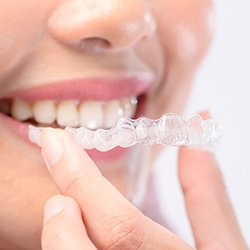
When reviewing your dental insurance policy, it’s important that you find out whether you have orthodontic coverage. Most plans do not include it as part of the available benefits; however, you can inquire about a supplemental plan. While many have exclusions such as an age limit or type of orthodontics, many companies are now including Invisalign as part of their available coverage, which can alleviate your out-of-pocket expenses by up to 50%.
Options for Making Invisalign Affordable
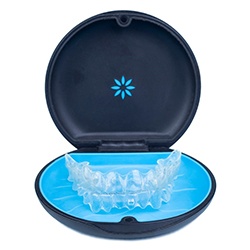
At Chaska Dental Center, we are pleased to provide our patients with access to money-saving offers, especially when it comes to Invisalign. Currently, we are offering 0% financing for up to 12 months when pursuing restorative and cosmetic dentistry.
Invisalign FAQs
Is Invisalign Right for Me?
Determining whether Invisalign is the right method of orthodontic treatment for you requires a scheduled consultation with our dentists in Chaska. Dr. Swingdorf, who is an Invisalign Preferred Provider, will look at the status of your teeth and decide if Invisalign can effectively lead to beautiful results.
In most cases, those with minor overcrowding, minor gaps, and minor bite misalignment can achieve success with Invisalign clear aligners. However, it is necessary that you do not possess any oral health problems such as decay or gum disease before starting treatment. If so, you’ll need to be treated for these issues first.
How Long Does Invisalign Take?
The timeline for each patient wearing Invisalign clear aligners is different. Typically, the average timeframe for completion is 12-18 months, but this can vary depending on the severity of the problem and how much you abide by the instructions provided to you by our team.
You must wear your aligners for 20-22 hours each day, as this ensures gentle, continuous pressure is placed on your teeth so that they will move in the right direction. Because of the predictable results Invisalign provides, everything should remain on schedule. However, if at any point you choose to forgo wearing your trays for the recommended amount of time, you run the risk of delaying your treatment.
Do I Need to Wear a Retainer After Invisalign?
Yes, it is necessary that you wear a customized aligner after completing treatment with Invisalign. Essentially, this is the retainer phase, and based on your case, you’ll likely need to wear your retainer full-time. This helps to keep your teeth in their new location so that they do not try to shift back into their original spot.
Without proper wear, you can undo all of the hard work you accomplished. Over time, Dr. Swingdorf will likely recommend that you wear your retainer only at night while you sleep.
Can I Be Treated With Invisalign If I’ve Worn Braces in the Past?
To determine if your smile can be treated using Invisalign, even after wearing traditional braces, you will need to meet with your Invisalign dentist. It is during this meeting that he will examine your smile and decide if the problem you’re experiencing is minor enough to be successfully treated using clear aligners.
Many adults who previously wore braces can achieve a straighter smile with Invisalign later in life; however, if you allowed a misaligned bite to return to its regular location because you did not wear your retainer, and it is now worse than before, you’ll likely need metal braces to fix the problem.
Does Invisalign Give You a Lisp?
Yes, it is possible for you to develop a slight lisp after receiving your initial aligners or anytime you switch out your set for a new one. However, there is no need to worry, as this change in your speech will be minimal and will only last a short time.
Your tongue must be able to press against the backside of your teeth to form various words and sounds, so until it becomes accustomed to the clear aligners, it may cause a lisp to form.
Does Wearing Invisalign Hurt?
When compared to traditional metal braces, wearing Invisalign is a breath of fresh air. No brackets and wires are protruding and rubbing against soft oral tissues, causing sores to form. However, it’s important to remember that Invisalign does apply gentle pressure to encourage proper tooth movement. This shift will naturally cause some discomfort. Fortunately, over-the-counter pain relievers and cold compresses can help minimize soreness that should only last a few days.
What Foods Can I Eat During Invisalign Treatment?
One of the greatest benefits that comes with Invisalign is your ability to eat all types of food. There are virtually no restrictions on what you can or cannot eat, only that you make sure to remove your trays before enjoying a meal or snack. You should also remember that you must wear your trays 20-22 hours a day, so eating off and on throughout the day can put you at risk of a potential delay. It’s best to stick to three full meals and two snacks daily.









